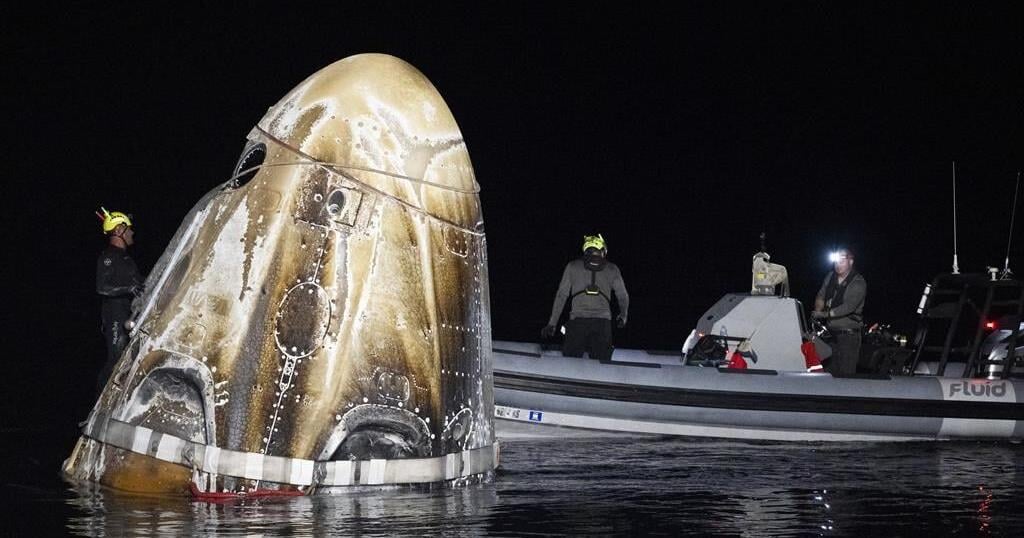CAPE CANAVERAL, Fla. (AP) — Three NASA astronauts whose prolonged space station mission ended with a trip to the hospital last month declined to say Friday which one of them was sick.
Astronauts Matthew Dominick, Michael Barratt and Jeanette Epps publicly discussed their spaceflight for the first time since returning from the International Space Station on Oct. 25. They spent nearly eight months in orbit, longer than expected because of all the trouble with Boeing’s Starliner crew capsule and rough weather, including Hurricane Milton.
Soon after their SpaceX capsule splashed down in the Gulf of Mexico off the Florida coast, the three were taken to a hospital in nearby Pensacola along with Russian cosmonaut Alexander Grebenkin, who launched with them back in March.
One of the Americans ended up spending the night there for an undisclosed “medical issue.” NASA declined to say who was hospitalized or why, citing medical privacy.
When asked at Friday’s news conference which one had been sick, the astronauts refused to comment. Barratt, a doctor who specializes in space medicine, declined to even describe the symptoms that the unidentified astronaut had.
“Spaceflight is still something we don’t fully understand. We’re finding things that we don’t expect sometimes. This was one of those times and we’re still piecing things together on this,” said Barratt, the only member of the crew who had flown in space before.
Epps said everyone is different in how they respond to space — and gravity.
“That’s the part that you can’t predict,” she said, adding, “Every day is better than the day before.”
Dominick said little things like sitting comfortably in a hard chair took several days to get used to once he returned. He said he didn’t use the treadmill at all during his time in space, as part of an experiment to see what equipment might be pared on a long trip to Mars. The first time he walked was when he got out of the capsule.
The two astronauts who served as test pilots for Boeing’s Starliner — Butch Wilmore and Suni Williams — will remain at the space station until February, flying back with SpaceX. Starliner returned empty in September.
___
The Associated Press Health and Science Department receives support from the Howard Hughes Medical Institute’s Science and Educational Media Group. The AP is solely responsible for all content.
